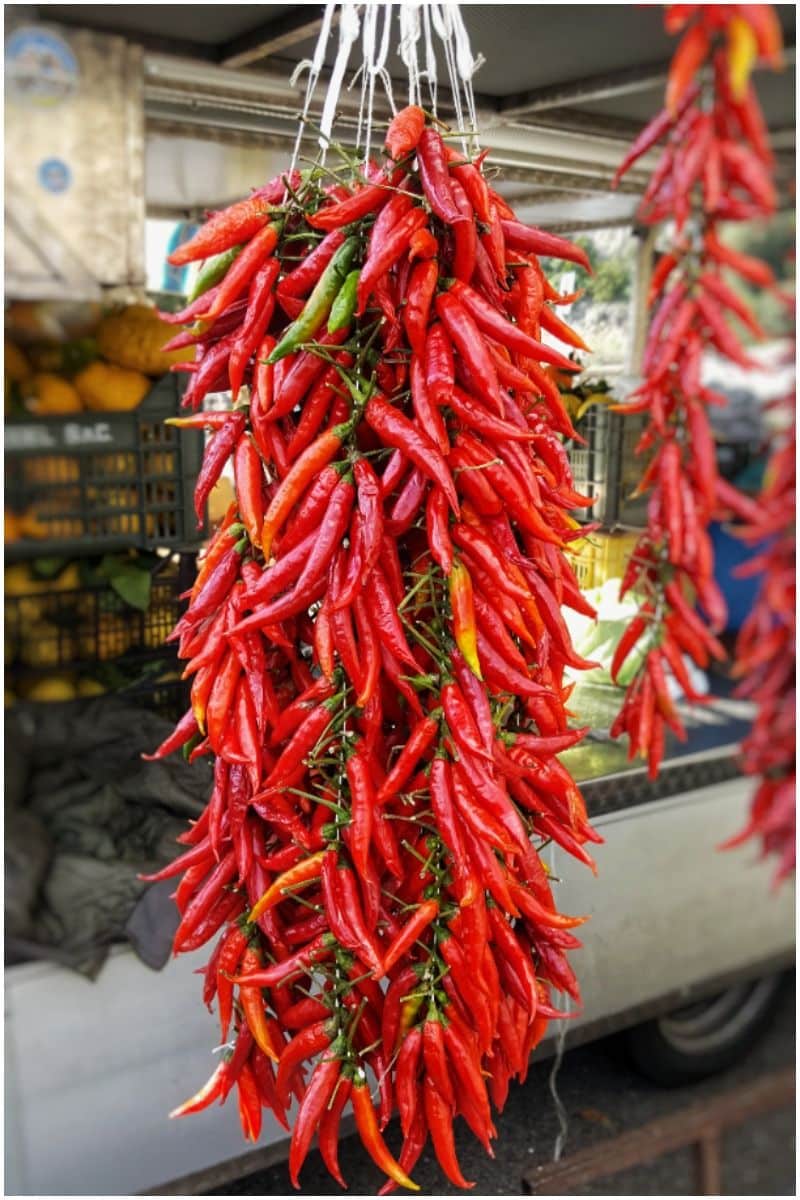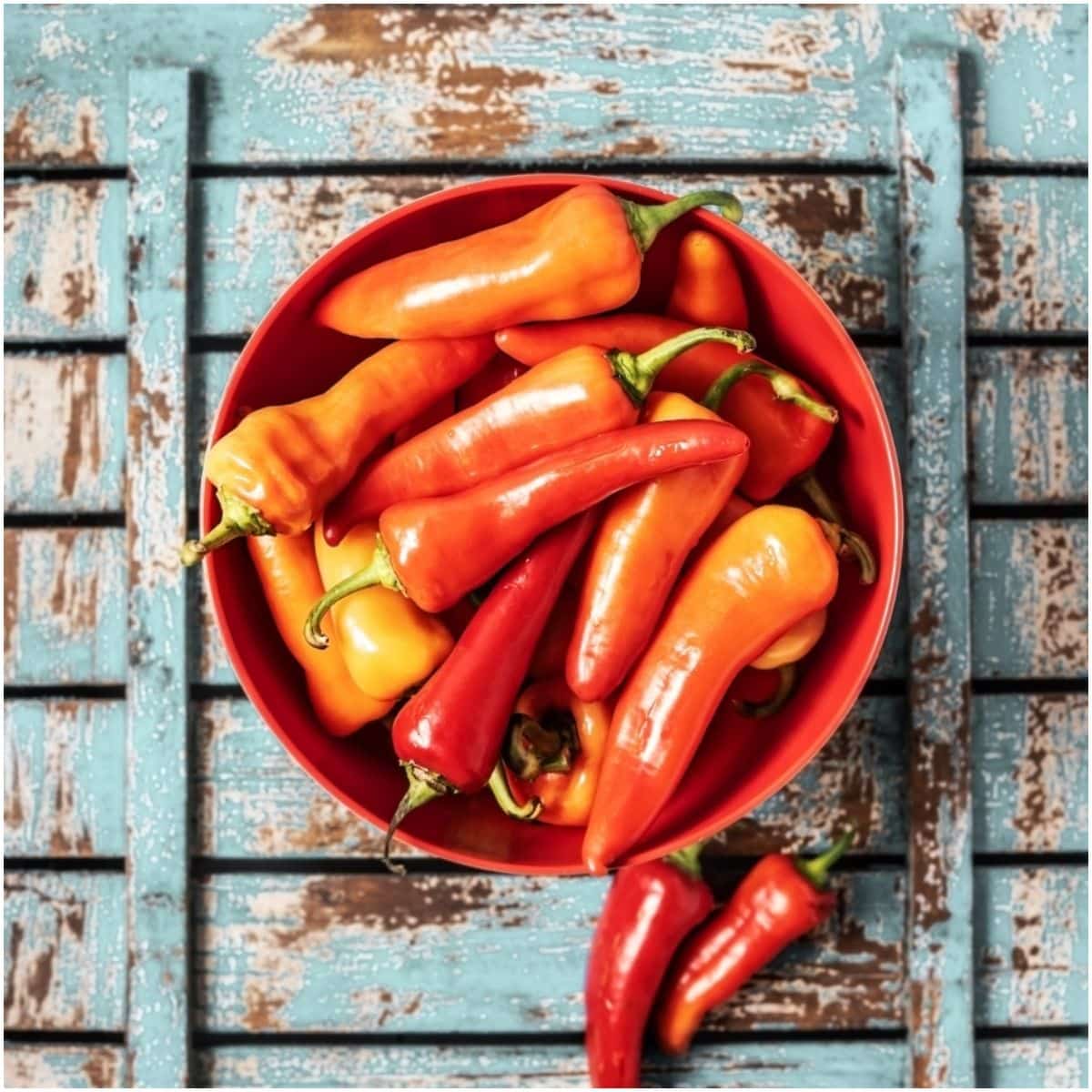Pepperoncini, also referred to as golden Greek peppers, Tuscan peppers, and sweet Italian peppers, are a small, sweet variety of pepper.
This vegetable has 100 to 500 SHU (Scoville Heat Units). These medium-spicy peppers are a staple of Italian and Greek cuisine.
Nutrition Facts
It is an excellent source of vitamin C, iron, calcium, vitamin A (in the form of carotenoids), dietary fiber, potassium, selenium, magnesium, folate, vitamin E, and phosphorus. Also, a 30 g serving contains just about eight calories, which is good news for people looking to lose unnecessary weight.
Health Benefits
Vitamin C
Vitamin C, also referred to as ascorbate and ascorbic acid, is a water-soluble vitamin. This actually means that the human body can’t store this essential vitamin, thus, it must be obtained through diet.
The synthesis of carnitine (formed in the kidneys and liver), which is responsible for the conversion of fat into energy in your structures that produce energy in cells, is influenced by the level of vitamin C.
Moreover, this vitamin is a powerful antioxidant that protects the body against free radical damage that results from pollutants, normal metabolism, and toxins.
Capsaicin
Capsaicin, the actual source of peppers’ spiciness, has been studied for decades, and below are a few of its benefits.
For instance, some studies found that consuming foods rich in capsaicin caused apoptosis in more than one type of prostate cancer as well as considerably stopped the spread of prostate cancer cells.
Also, some research established that this active component of peppers urges prostate cancer cells to eliminate themselves.
According to the University of Maryland Medical Center, many creams contain capsaicin since it is beneficial in relieving pain from a variety of conditions, like – fibromyalgia, arthritis, lower back pain, and nerve pain.
Vitamin A

These peppers are a source of vitamin A (in the form of beta-carotene), which is required by the body to support all of the skin cells both externally and internally. Signs and symptoms of vitamin A deficiency include – scaly skin, night blindness, poor growth, brittle hair and nails, and weak immunity.
READ MORE: Rutabaga vs Turnip
Side Effects
The amount of sodium in these peppers depends upon the method of preservation (close to zero in its natural form). For example, some types of preserved pepperoncini have approximately 600 mg of sodium in a 3-pepper serving.
Sodium is an essential mineral for human health that helps to regulate fluids by letting the human body know when it is time to dispose or replenish water.
However, too much sodium can be bad for you since when you consume too much sodium regularly, the body holds extra water. This happens due to the fact that the kidneys maintain a special ratio of electrolytes.
Also, salt (sodium is about 40 percent of table salt), as well as salty and salted foods, are a cause of stomach cancer, according to the American Institute for Cancer Research and World Cancer Research Fund.
READ MORE: Pickled Banana Peppers – Health Benefits
Banana Pepper

Also referred to as banana chili or yellow wax pepper, it is a cultivar of the species Capsicum annuum that has a Scoville range of 100 to 500.
Nutrition Facts
These peppers contain considerable amounts of vitamin A (in the form of carotenoids), vitamin C, folate, vitamin B6, potassium, iron, selenium, dietary fiber, phosphate, and iron. These vegetables also have a negligible amount of carbohydrates, sugar, and fat.
Health Benefits
Boosts Collagen Production
Vitamin C may be the most well-known of all the vitamins. It is required as a cofactor for an enzyme that makes a unique amino acid called 4-hydroxyproline in collagen strands and is also a potent antioxidant.
According to research, long-term consumption of foods rich in vitamin C may reduce the risk of vision loss from macular degeneration and the formation of cataract.
More importantly, this vitamin promotes healthy skin, bones, and blood vessels. A deficiency in vitamin C leads to a condition called scurvy, which results from a defect in the structure of the collagen.
100g of this vegetable has 82,7 mg of vitamin C which is about 138 percent of the daily recommended intake.
Vitamin B6
It is an essential B-complex vitamin that aids in the overall smooth operation of a variety of internal body functions. Many studies have concluded that this vitamin is vital in reducing water retention and relieving edema (abnormal accumulation of fluid in the interstitium), as well as improving peripheral neuropathy and magnesium deficiency.
100g of this healthy vegetable has 0,4 mg of vitamin B6 that is approximately 18 percent of the daily recommended intake.
Dietary Fiber
Dietary fiber has attracted considerable attention due to its substantial health benefits for people.
Dietary fiber is the part of plants that the human body can’t digest. It is classified as insoluble or soluble. Insoluble fiber increases the movement of waste and food through the digestive system and provides bulk for stool formation, which can help prevent constipation. Soluble fiber slows the rate at which carbohydrates and other nutrients are absorbed into the bloodstream and digestion.
100g of this vegetable has 3,4 g of dietary fiber which is 14% of the daily recommended intake.
READ MORE: Rambutan vs Lychee
Side Effects
There are no known scientifically proven side effects.
Pepperoncini vs Banana Pepper – Which Has A Better Nutritional profile?
Both these peppers are healthy and nutritious, however, banana pepper has a better nutritional profile due to its higher content of vitamin C, vitamin K, and potassium. As a side note, don’t overconsume pepperoncini since it is loaded with sodium.
Images credit – Shutterstock
READ THIS NEXT: Millet vs Quinoa
References http://hortsci.ashspublications.org/content/31/2/198.full.pdf https://www.sciencedaily.com/releases/2015/04/150423085442.htm http://ucce.ucdavis.edu/files/datastore/608-102.pdf
